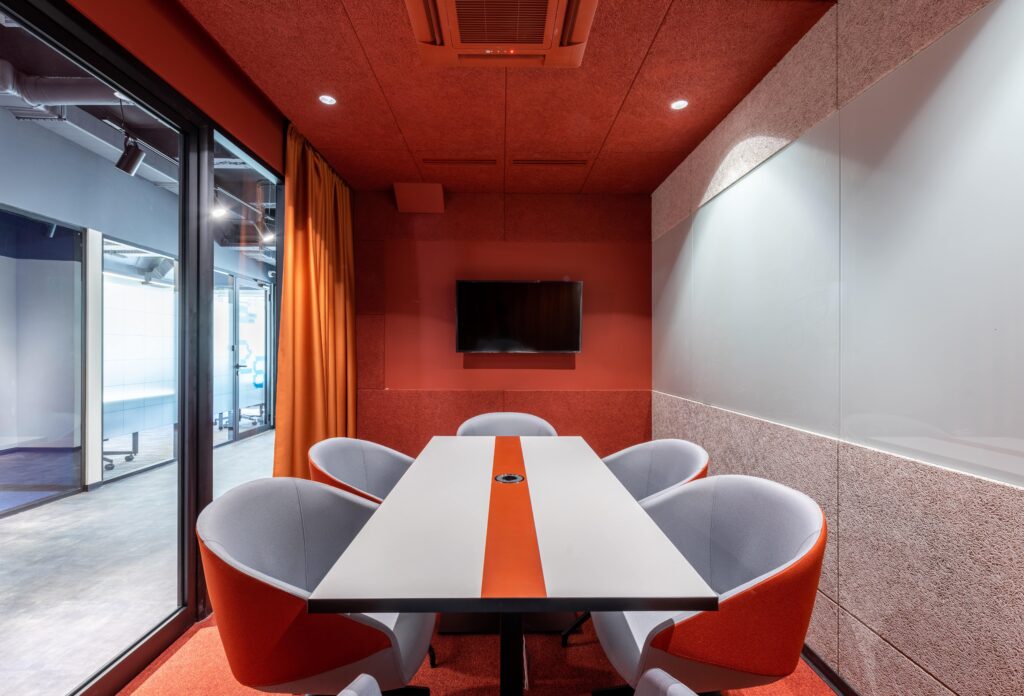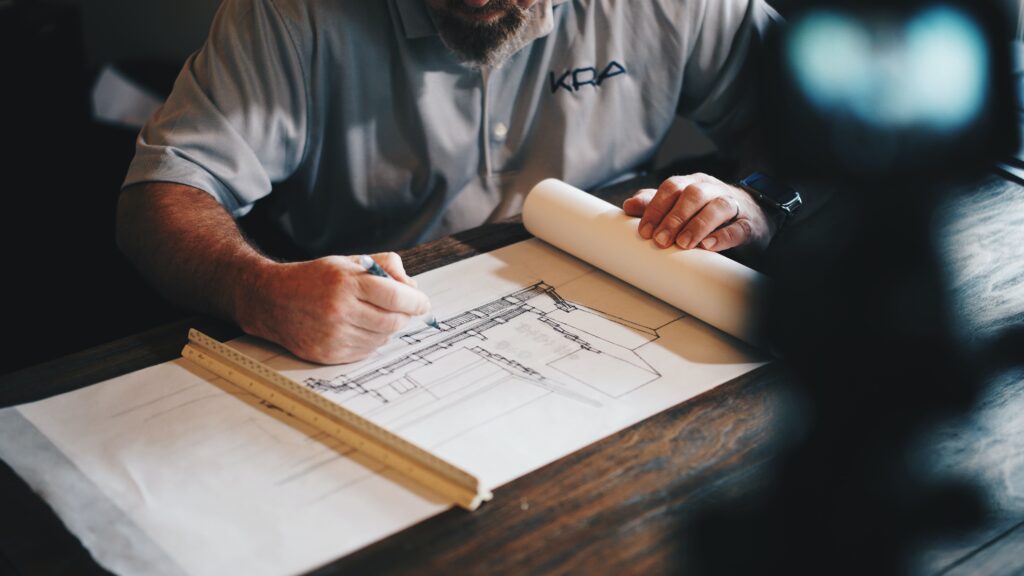Creating an Inviting and Functional Space: A Step-by-Step Guide to Proper Planning and Design for Commercial Renovations
Are you considering a commercial renovation? Whether you’re revamping your office, restaurant, or retail space, creating an inviting and functional environment is essential. But where do you start? In this step-by-step guide, we’ll walk you through the proper planning and design process for successful commercial renovations. From identifying your goals and budget to selecting the best materials and layouts, we’ll cover what you need to know to transform your Chester County, PA space into a stunning and efficient masterpiece.
With our expert tips and insights, you’ll learn how to optimize your layout for maximum productivity, create an atmosphere that aligns with your brand, and enhance the overall customer experience. So, if you’re ready to elevate your business to the next level, let’s dive in and discover the secrets to creating a commercial space that leaves a lasting impression.

Understanding the Importance of Proper Planning and Design in Commercial Renovations
When it comes to commercial renovations, proper planning and design are crucial. A well-executed commercial remodel can not only improve the functionality of your space but also enhance the overall customer experience and boost your business’s bottom line. Before diving into your renovation project, it’s important to understand why planning and design matter.
First and foremost, a well-planned renovation ensures that your space meets your specific needs and goals. By taking the time to assess your current space and identify your renovation goals, you can create a design that optimizes productivity and efficiency. Additionally, a carefully planned renovation allows you to make the most of your budget by prioritizing the areas that will have the biggest impact on your business.
Proper planning and design also play a crucial role in creating an inviting and memorable customer experience. The layout, materials, and aesthetics of your space all contribute to the overall atmosphere and brand image. By carefully considering these elements during the planning and design phase, you can create a space that aligns with your brand and leaves a lasting impression on your customers.
By taking the time to assess your needs and goals, prioritize your budget, and consider the customer experience, you can create a space with your commercial remodeling contractors that not only looks great but also functions optimally for your business.
Assessing the Current Space and Identifying Renovation Goals
Before embarking on a commercial renovation project, it’s important to evaluate your current space and identify your renovation goals. This step will help you understand the changes you need to make and set a clear direction for your entire renovation.
Start by taking a thorough inventory of your current space. Note down its strengths and weaknesses, paying attention to any areas that require improvement. Consider factors such as functionality, layout, lighting, and overall aesthetics. By identifying areas in need of attention, you can better prioritize your renovation efforts and allocate your budget accordingly.
Once you have assessed your current space, it’s time to identify the goals of your commercial remodel. What do you hope to achieve with your renovation? Are you looking to create a more open and collaborative workspace? Do you want to enhance the customer experience in your retail store? Clearly defining your goals will help guide the design process and ensure your renovation aligns with your business objectives.
Remember, your renovation goals should be specific, measurable, achievable, relevant, and time-bound (SMART). This will help you stay focused and track your progress throughout the renovation process. By clearly defining your renovation goals, you can establish realistic expectations and help to ensure that your project stays on track.

Budgeting for a Commercial Renovation Project
Budgeting is a critical aspect of any commercial renovation project. Without a clear budget in place, costs can easily spiral out of control and exceed your financial capabilities. To avoid this, simply set a realistic budget and stick to it throughout the renovation process.
Start by determining how much you can afford to spend on your renovation. Consider factors such as your business’s financial status, available funds, and potential return on investment. Consult with a financial advisor or accountant to ensure the budget aligns with your overall business strategy.
Once you have established your budget, break it down into categories such as materials, labor, permits, and contingency funds. This will clearly define how much you can allocate to each aspect of your commercial renovations. Leave some room in the budget for unexpected expenses or changes that may arise during the project.
In addition to the initial renovation costs, consider the long-term maintenance and operational costs of your renovated space. Will the new layout require additional maintenance? Will the materials used be durable and easy to clean? Taking these factors into account during the initial budgeting process will help you make informed decisions and avoid future financial headaches.
By setting a realistic budget and managing your expenses, you can ensure that your commercial renovation project stays within your financial means and delivers the desired results.
Finding and Hiring the Right Professionals for Your Commercial Renovation
When it comes to commercial renovations, hiring the right professionals is key to the success of your project. Whether you need an architect, interior designer, contractor, or a combination of these professionals, finding the right team of commercial remodeling contractors is crucial for a smooth renovation process.
Begin by seeking recommendations from trusted sources such as friends, colleagues, or industry associations. Word-of-mouth referrals are often a reliable way to find professionals who have a proven track record of delivering high-quality work. You can also research online directories and review websites and social media platforms to find commercial remodel professionals with positive reviews and testimonials.
Once you have a list of potential candidates, schedule interviews or consultations to discuss your project. During these meetings, be prepared to ask questions about their experience, qualifications, previous projects, and approach to commercial renovations. Don’t hesitate to request references or view their portfolio to get a sense of their style and expertise.
When selecting professionals for your Chester County, PA renovation project, it’s important to consider factors such as their communication skills, reliability, and ability to work within your budget and timeline. Building a good rapport with your team is crucial for a successful renovation, as it facilitates effective collaboration and minimizes misunderstandings.
Remember, hiring professionals with the right expertise and experience will not only save you time and stress but also lead to your commercial renovation being executed to the highest of standards.
Developing a Detailed Renovation Plan
A detailed renovation plan is essential for a successful commercial renovation project. It serves as a roadmap, outlining the steps, timelines, and resources required to bring your vision to life. By developing a thorough plan, you can ensure that your renovation stays on track and avoids potential delays or pricy mistakes.
Work closely with your hired professionals to develop a comprehensive design concept. This includes creating detailed floor plans, 3D renderings, and mood boards to visualize the outcome. Consider traffic flow, functionality, branding, and aesthetics to create a design that embodies your goals and aligns with your business.
Once the design concept is finalized, it’s time to break down the renovation process into smaller tasks and set realistic timelines for each. Identify any dependencies or critical paths that may impact the overall project schedule. By breaking the renovation down into manageable tasks, you can track progress and address any issues or delays promptly.
In addition to the design and construction aspects, your renovation plan should include a detailed budget and procurement strategy. This will establish a clear understanding of the costs involved and allow you to source materials, fixtures, and equipment in a timely manner.
To keep your renovation plan on track, regular communication and coordination with your team are essential. Schedule regular meetings or check-ins to discuss progress, address concerns, and make any necessary adjustments. By maintaining open lines of communication, you can ensure everyone is on the same page.
Creating a Functional Layout for Your Commercial Space
The layout of your commercial space plays a significant role in its functionality and efficiency. A well-designed layout maximizes productivity, optimizes traffic flow, and creates a seamless experience for both employees and customers.
When creating a functional layout for your commercial space, consider the following:
- Traffic Flow: Analyze the movement patterns within your space and make sure there are clear pathways for employees and customers alike. Minimize bottlenecks and congestion by strategically placing furniture, fixtures, and equipment.
- Zoning: Divide your space into different zones based on their function. For example, separate areas for workstations, meeting rooms, customer service, and storage. Doing so will create a sense of order and clearly define the purpose of each area.
- Ergonomics: Consider the comfort and well-being of your employees when designing the layout. Ensure that workstations are ergonomically designed to prevent injuries and promote productivity. Provide adequate lighting, ventilation, and temperature control to create a comfortable working environment.
- Accessibility: Make your space easy for everyone to access, including individuals with disabilities. Incorporate features such as ramps, elevators, wide doorways, and accessible restrooms to prioritize equal access for all.
- Flexibility: Design your space to accommodate future changes and growth. Consider modular furniture, movable partitions, and flexible layouts that can easily adapt to evolving needs.
By carefully considering these factors when creating your commercial space layout, you can optimize productivity, improve employee satisfaction, and enhance the overall customer experience.

Choosing the Right Materials and Finishes for Your Renovation
The materials and finishes you choose for your commercial renovation can greatly impact the overall look, feel, and durability of your space. When selecting materials, consider aesthetics, functionality, durability, maintenance requirements, and budget.
Start by researching different materials and finishes that align with your design concept and brand image. Consider the desired style, colors, textures, and patterns that will enhance the overall atmosphere of your space. Look for materials that are not only visually appealing but also practical and easy to maintain.
When it comes to flooring, consider options such as hardwood, laminate, carpet, or vinyl, depending on your specific needs and budget. For walls, consider paint, wallpaper, or wall panels that can add texture and visual interest. Lighting fixtures, window treatments, and furniture should also be selected based on both aesthetic appeal and functionality.
Choosing materials that are not only aesthetically appealing but durable and able to withstand the demands of your commercial space is essential. Consider factors such as foot traffic, moisture levels, and wear and tear when selecting materials. For example, in high-traffic areas, opt for durable flooring materials that can withstand heavy use and are easy to clean.
Finally, don’t forget to consider the environmental impact of the materials you choose. Look for eco-friendly options that are made from sustainable or recycled materials. This not only reduces your carbon footprint but also sends a positive message to your customers.

Incorporating Branding and Aesthetics into Your Commercial Design
Your commercial space is an extension of your brand and should reflect your company’s values, culture, and identity. Incorporating branding and aesthetics into your design can help create a cohesive and memorable experience for your customers.
Here are design tips to consider:
- Color Palette: Select colors that align with your brand’s visual identity. Consider the psychology of colors and how they can influence emotions and perceptions. For example, bold and vibrant colors may be suitable for a creative agency, while neutral tones may be more appropriate for a professional office.
- Branding Elements: Incorporate your logo, tagline, and other branding elements into your space. This can be done through signage, wall graphics, window decals, or custom artwork. Ensure that these elements are prominently displayed and aligned with your overall design concept.
- Consistency: Maintain consistency throughout your space by using consistent fonts, graphics, and imagery. This helps reinforce your brand identity and creates a cohesive and professional look.
- Storytelling: Use your space to tell a story about your brand and its values. Incorporate elements such as artwork, photographs, or displays to showcase your company’s history, achievements, or community involvement.
- Lighting: Lighting plays a crucial role in setting the mood and atmosphere of your space. Task lighting, accent lighting, ambient lighting, or other lighting techniques can be implemented to highlight specific areas and create a desired ambiance.
Remember, your commercial space is a valuable opportunity to make a lasting impression on your customers. By incorporating branding and aesthetics into your design, you will create a space that not only looks great but also aligns with your brand’s identity and values.
Ensuring Compliance with Building Codes and Regulations
When undertaking a commercial renovation, it’s important to ensure compliance with local building codes and regulations. Failing to do so can result in costly fines, delays, or even legal issues.
Here are some steps to follow to ensure compliance:
- Research: Familiarize yourself with the building codes and regulations applicable to your location and type of renovation project. These codes cover various aspects such as fire safety, accessibility, electrical, plumbing, and structural requirements.
- Consult Professionals: Engage with professionals such as architects, engineers, or commercial remodeling contractors who are knowledgeable about local building codes. They can guide you through the design and construction process, ensuring that your renovation meets all necessary requirements.
- Obtain Permits: Before starting any construction work, obtain all the necessary permits and approvals from the relevant authorities. This may include permits for structural changes, electrical work, plumbing, or signage. Failure to obtain permits can result in severe penalties or the need to undo the work.
- Regular Inspections: Throughout the renovation process, schedule inspections to ensure that the work is being carried out in compliance with building codes. These inspections help identify any issues or non-compliance early on, allowing for prompt corrections.
Remember, compliance with building codes and regulations is not only a legal requirement but also impacts the safety and well-being of your employees and customers. By prioritizing compliance in your commercial renovation, you can avoid potential risks and future headaches.
If you are looking to complete a commercial remodel in Chester County, PA, contact the experts at Harbor Stone Construction Company – we are ready to take your project from initial concept to finished product, staying on time and on budget.
